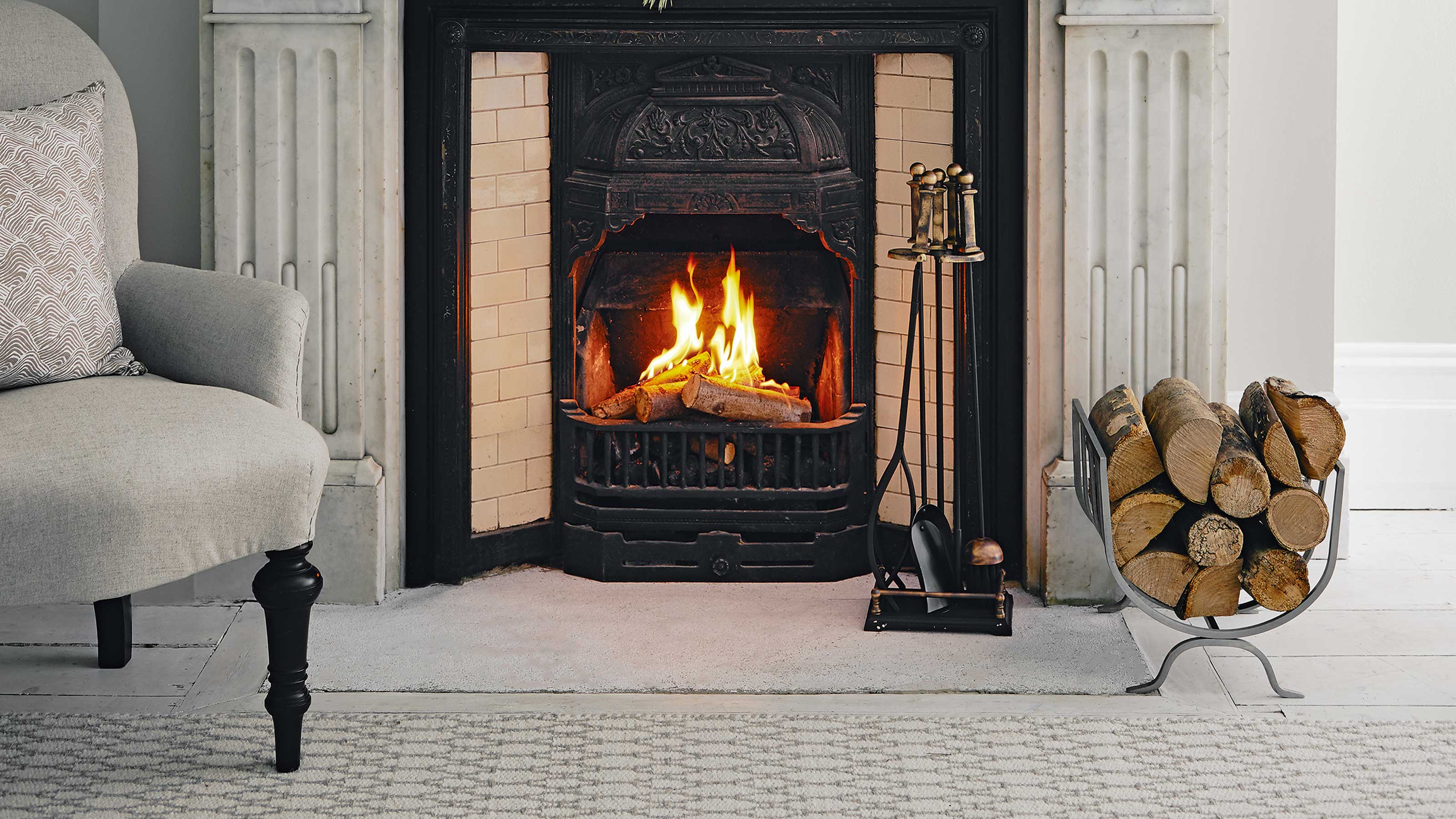5 common firewood storage mistakes – that make logs burn less effectively
Mistakes that should not be made when storing your firewood


There is nothing quite like using natural firewood around your home, whether it's used in an outside fire pit or in an indoor fireplace, the cozy warm feeling of sitting around a natural fire is incomparable.
However, to have a long-lasting undamaged supply of firewood means that you have to know how to store your firewood correctly. Proper storage is essential for your firewood to perform optimally when used around your home.
When it comes to storing firewood many people think that it is as simple as having a log store or a dry place to stack it. However, storing firewood effectively has many different factors and it is easy to fall into the trap of storing your firewood incorrectly without even knowing.
Firewood storage mistakes that are easily made
We’ve asked our experts the most common mistakes people make when it comes to storing firewood and what to do instead.
1. Stacking firewood directly on the ground

Keeping your firewood directly on the ground could seem like the easiest option, especially if you store your wood outside in a log store. But storing your wood this way is never advised – ground contact can lead to large amounts of moisture buildup, which easily seeps into the logs' base layer. This will have a significant impact on the way your wood burns when you come to use it.
Wood with a moisture content of as little as 20% will smoke and produce unpleasant pollutants when burned. While wood with a moisture content of 40% and above will have a much slower burn time and not produce heat effectively. The high moisture content will also lead to wood rot and damage to your entire pile as moisture can rise through the layers in which the wood is staked.
When your logs get wet the moisture attracts insects and infestations says Zackary DeAngelis, CEO of Pest Pointers, these are normally in the form of carpenter ants and termites. Many pests prefer living in damp and humid environments so will be attracted to a pile of damp logs to nest and lay eggs. If not found in time these creatures can be transported into your home through your firewood.
A great way to ensure that your stack of logs is sufficiently off the ground is to invest in a heavy duty firewood log stand like this one available on Amazon. Having one of these means that your base layer of logs will be lifted off the ground and less likely to be exposed to the ground's moisture.

Zack ended up founding Pest Pointers in the summer of 2019 due to his love of the outdoors and vast experience dealing with wildlife having grown up on 50+ acres of land, where living in a place surrounded by woods, swamps, and animals gave him a ton of experience in dealing with the outdoors.
2. Failing to rotate stock
When you store and keep firewood it is important that you rotate the stock constantly, especially if you have a large supply of wood at one time. It is quite a common occurrence to have a build-up of new wood going into your store and subsequently, your old yet-to-be-used wood being pushed to the back, meaning you are consistently only burning fresh new wood.
Old stocks that are lying in the back of your store for months, and in some circumstances years, can be a big problem. They are more likely to become brittle and fall apart as well as being an attractive place for infestations of woodworm.
Michel Johnson, a pest control expert, advises that firewood should be stored in a 'first in first out' system. It is a good idea to organize your wood in two separate piles. For example, all the new wood goes to the left of your wood store, and all the old wood goes to the right. This way everyone who uses it knows which pile is which. Always be sure to burn the older logs first.

Michel Johnson is a highly skilled and knowledgeable pest control expert specializing in bed bug eradication, with a strong passion for educating the public about effective pest management strategies through his blog, Ciao Bed Bugs.
3. Storing firewood indoors

Yes! Firewood looks great when stored in beautiful baskets around the fireplace, however, having large amounts of firewood indoors is not sensible. It is one thing to bring firewood inside your home for immediate use or even to keep it inside and use it throughout the evening, but it is another thing to have an entire pile constantly sit in your space.
This is because firewood can bring in pests such as termites, ants, and beetles into your home. It can also introduce mold and fungus which can cause health hazards for you and your family. Additionally, storing firewood indoors can increase the risk of a house fire if the wood is not properly dried and can emit harmful gasses when burned.
Sometimes firewood is stored indoors for a whole summer waiting to be used when the weather turns. Instead, transport firewood as and when it is needed in the long run this will really pay off as well as keep your house cleaner.
4. Overcrowding
Stacking too much firewood can lead to overcrowding, which can be problematic. A tightly packed pile of wood restricts airflow, preventing proper seasoning and potentially harboring pests. Maintain adequate spacing between the logs to ensure proper drying and pest prevention.
Allow as much airflow as possible when you are next stacking your log store, a good technique to use is to take irregular shaped logs and create a cross-stack by placing longs diagonally ever three layers, this channels a consistent airflow ensuring the logs don’t get waterlogged as well as making them less desirable for potential pests.
Leroy Hite, founder of Cutting Edge Firewood in Atlanta suggests that you always stack your split logs bark side up, as the bark acts as a protective layer keeping moisture and rain out of the inside log, the bark will continue to shed moisture even when it is on the woodpile.

Leroy Hite, Founder and CEO of Cutting Edge Firewood, started Cutting Edge in 2013 to disrupt the firewood industry. Leroy envisioned a company with ultra-premium firewood and unparalleled customer service. Starting with 3 species of firewood (oak, hickory and cherry), he then branched into cooking wood in 2017.
5. Not properly covering or protecting the wood

Protecting your firewood is vital to safeguarding your wood. Many people leave their firewood exposed to the elements, causing it to rot or become less efficient for burning.
Leaving firewood exposed to the elements can lead to rot and mold growth. Cover and protect your firewood at all times. Even if your base layer of wood is elevated off the ground it does not mean that the elements can not access it from other areas. This includes the back of your firewood store. In some cases, these may be open-backed so still exposed to the weather, or potentially be made of wood themselves and be rotting in different areas which can easily affect the wood that is being stored there now.
The easiest way to combat this is to cover your wood supply in a thick tarp material or use a firewood rack cover available from Amazon. These are easy to use and the best way to ensure that your supply of firewood is dry from all angles. Pair your rack cover with this 8 ft firewood rack from Amazon to ensure you never have to deal with damp and infested wood again.
FAQs
Is it okay to store firewood in the garage?
Storing firewood in the garage is okay if the wood has already dried out. When the wood is wet it does not burn effectively and if it is stored in that state it will most likely stay damp unless the garage is heated. Firewood usually dries better outside before being brought into the garage.
What is the best way to store a lot of firewood?
Ideally, firewood should be stored outside. One method is to place the wood pile on top of plastic sheeting to prevent moisture from reaching the pile from the base and also a top cover to protect it from the elements.
Should you store firewood covered or uncovered?
In order to properly dry, firewood should remain uncovered for as long as possible. However, this is not practical when it rains or snows. A solution to this is to cover the firewood with a slanted roof so that the moisture runs away from the wood pile, providing a sufficient cover but open at the sides so air can circulate effectively.
By avoiding these common mistakes and following proper firewood storage practices, you can ensure that your firewood remains dry, well-seasoned, and ready to provide warmth and comfort during the colder months.
But remember, every home, and every backyard is unique. So while it's essential to know the rules, it's equally vital to understand what works for your space and what doesn’t.
Sign up to the Homes & Gardens newsletter
Design expertise in your inbox – from inspiring decorating ideas and beautiful celebrity homes to practical gardening advice and shopping round-ups.

Seraphina is a contributing editor at Homes & Gardens, writing Solved features on organizing and storage. She loves to decorate and also grow her own produce from her home in London. Her previous experience includes working at Women's Health and Fabulous Magazine.
-
 Ina Garten's storage pantry is an insightful window into all of the best cookware used by the chef – and it's easy to recreate on your kitchen shelves from $48
Ina Garten's storage pantry is an insightful window into all of the best cookware used by the chef – and it's easy to recreate on your kitchen shelves from $48The beautiful dishware in The Barefoot Contessa's Hamptons pantry showcases the tools she uses most often to cook – this is exactly how you replicate it
By Sophie Edwards Published
-
 Extend the lifespan of your appliance with 5 simple but crucial washing machine maintenance tips
Extend the lifespan of your appliance with 5 simple but crucial washing machine maintenance tipsFrom cleaning the filters to keeping the door open, experts reveal the washer tips they swear by
By Andy van Terheyden Published